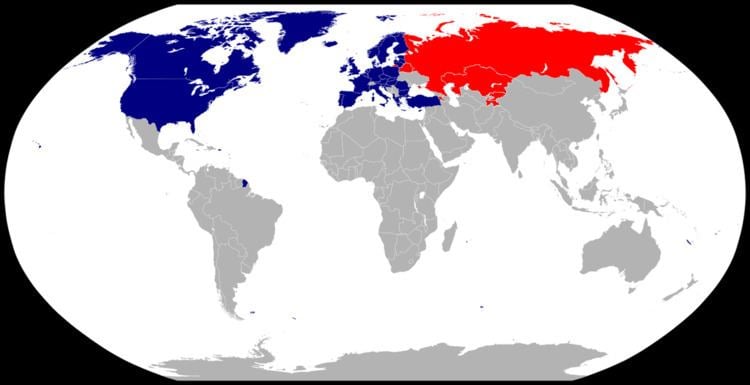

NATO was founded in April 1949 by 10 Western European nations, and the United States and Canada. The North Atlantic Treaty Organization (NATO) and the Warsaw Pact were the military alliance equivalents to the Organization for European Economic Cooperation and COMECON in their respective blocs. the Warsaw Pact Read the original text of the North Atlantic Treaty through the image. However a year later, Stalin increased the authority of COMECON in directly intervening in member states, especially in areas of foreign trade. In the beginning of negotiations, the plan was for COMECON to be a forum for coordination of national economic plans through unanimous ratification of any changes or new policies. Since Marshall Plan aid was extended to all countries in Europe, including those aligned with the Soviet Union, Stalin was worried that his communist allies would be pulled into strong economic relations with the West and created his own economic assistance plan to keep them in line. The Council for Mutual Economic Assistance (founded in 1949 by the Soviet Union, Bulgaria, Poland, Romania, Czechoslovakia and Hungary) was Soviet Union and Eastern Bloc reaction to the Marshall Plan and Organization for European Economic Cooperation in Western Europe. Discover more information on COMECON through the logo Experts disagree on how much credit is due to the Marshall Plan however, they largely agree that it sped up recovery, and was certainly instrumental in reducing political discontent and stemming the communist tide in Western Europe.

Standards of living increased dramatically. The United Kingdom received the most ($3 billion), followed by France ($2 billion) and West Germany ($1.5 billion).īetween 19 European industrial production increased by 35 percent and agricultural exceeded pre-war production levels. In total, the Marshall Plan supplied Europe with more than $12 billion from 1948-1951, divided based on population and industrial power. Once basic needs were stable, the money was used to physically reconstruct infrastructure and industries. Money from the Marshall Plan was mostly used to buy American imports like food and fuel, as local sources had been wiped out by the war. An American advisor from the ECA, and local government, business and labor representatives oversaw the implementation of funds. Under the plan, money was transferred to each European government. Aid under the Marshall Plan first went to Greece and Turkey to continue to crush communist influence there. In 1948, President Truman asked Congress to pass the Economic Cooperation Act establishing the Economic Cooperation Administration (ECA) to facilitate implementation of the Marshall Plan in 16 western European countries. Marshall Plan aid to France included this Caterpiller bulldozer shown here arriving in 1949 to help rebuild that country’s electric power system. Belgian electrical engineers inspect the rotor of a 40,000 kilowatt turbine during their visit to GE’s new turbine manufacturing building at Schenectady, New York. A netfull of fish is emptied onto the boat deck. The Marshall Plan has helped repair the ruined docks and wharves of Ostende, one of Belgium’s principal fishing ports. Though the aid was open to all European countries, Stalin ordered those under his Eastern Bloc to reject American aid, and created a Soviet plan as a response to the Marshall Plan. Unsurprisingly, Stalin was extremely skeptical of the plan and believed it would create an anti-Soviet bloc. Once talks began to put the plan in place, all of the Allies, including the Soviet Union, in an effort to gain Stalin’s trust, were invited to a meeting in Paris to negotiate the terms of American aid in Europe. He believed that economic stability was key to political stability, and crushing Soviet influence, in Europe. It was an economic and social reconstruction plan for Europe designed to speed up recovery in the countries still suffering the effects of WWII. The plan is named after Secretary of State George Marshall, who presented the theory behind the plan in a commencement address at Harvard in 1947. The Marshall Plan (or the European Recovery Program) was a direct consequence of Containment policy. In this section, learn more about how the West and East confronted each other throughout the Cold War. Instead, a cold war plays out through competing economic systems, military alliances as well as arms building and the accumulation of other resources, and sometimes through proxy or surrogate wars.

The Cold War Part 2 The Cold War / Part 2Ī “cold” war, as opposed to a “hot” war, is one that does not involve direct military confrontation.


 0 kommentar(er)
0 kommentar(er)
